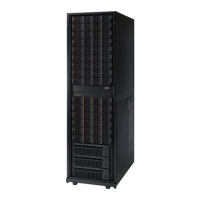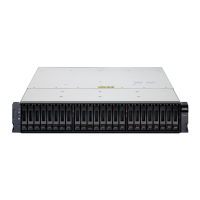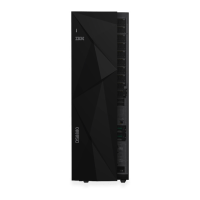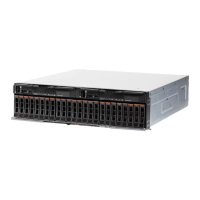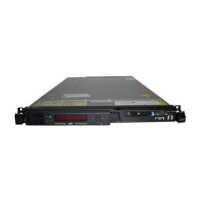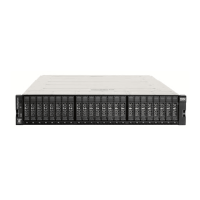Preparing your site to provide water to the heat exchanger
You must prepare your site to provide water to the rear-door heat exchanger
before the rack can be installed.
The following requirements must be met before the rear-door heat exchanger can
be installed:
v Provide chilled, conditioned water that meets the specifications.
v Procure and install the water supply system that is suitable for your data center.
v Provide a redundant secondary-cooling-loop water supply or enough room air
conditioning to handle a tolerable heat load if the function of one or more of the
heat exchangers is compromised. If the rear door is opened for rack maintenance
or if conditioned water supply to the door is stopped, the rack heat load is sent
into the room and must be handled by room air conditioning until the
conditioned water supply is restored.
v Provide floor or ceiling tile cutouts or protective coverings to avoid tripping
hazards on non-raised floors as part of hose management.
Water specifications for the secondary cooling loop
Learn about the water specifications that are required for the secondary cooling
loop of your rear-door heat exchanger.
The water that is being supplied to the heat exchanger must meet the following
requirements; otherwise, system failures might occur over time, as a result of:
v Leaks that are caused by corrosion and pitting of the metal components of the
heat exchanger or the water supply system.
v Buildup of scale deposits inside the heat exchanger, which can cause the
following problems:
– A reduction of the ability of the heat exchanger to cool the air that is
exhausted from the rack.
– Failure of mechanical hardware, such as a hose quick-connect adapter.
v Organic contamination, such as bacteria, fungi, or algae. This contamination can
cause the same problems as described for scale deposits.
Water control and conditioning for the secondary cooling loop
The water that is used to fill, refill, and supply the heat exchanger must be
particle-free deionized water or particle-free distilled water with appropriate
controls for avoiding the following issues:
v Metal corrosion
v Bacterial fouling
v Scaling
Because of typical water temperatures (described in Water delivery specifications
for secondary loops), the water might not be able to originate from the primary
building chilled-water system. Conditioned water for the heat exchanger must be
supplied as part of a secondary, closed-loop system.
Important: Do not use glycol solutions because they can adversely affect the
cooling performance of the heat exchanger.
74 IBM XIV Gen3 281x-11x, 281x-21x, and 281x-314 Planning Guide

